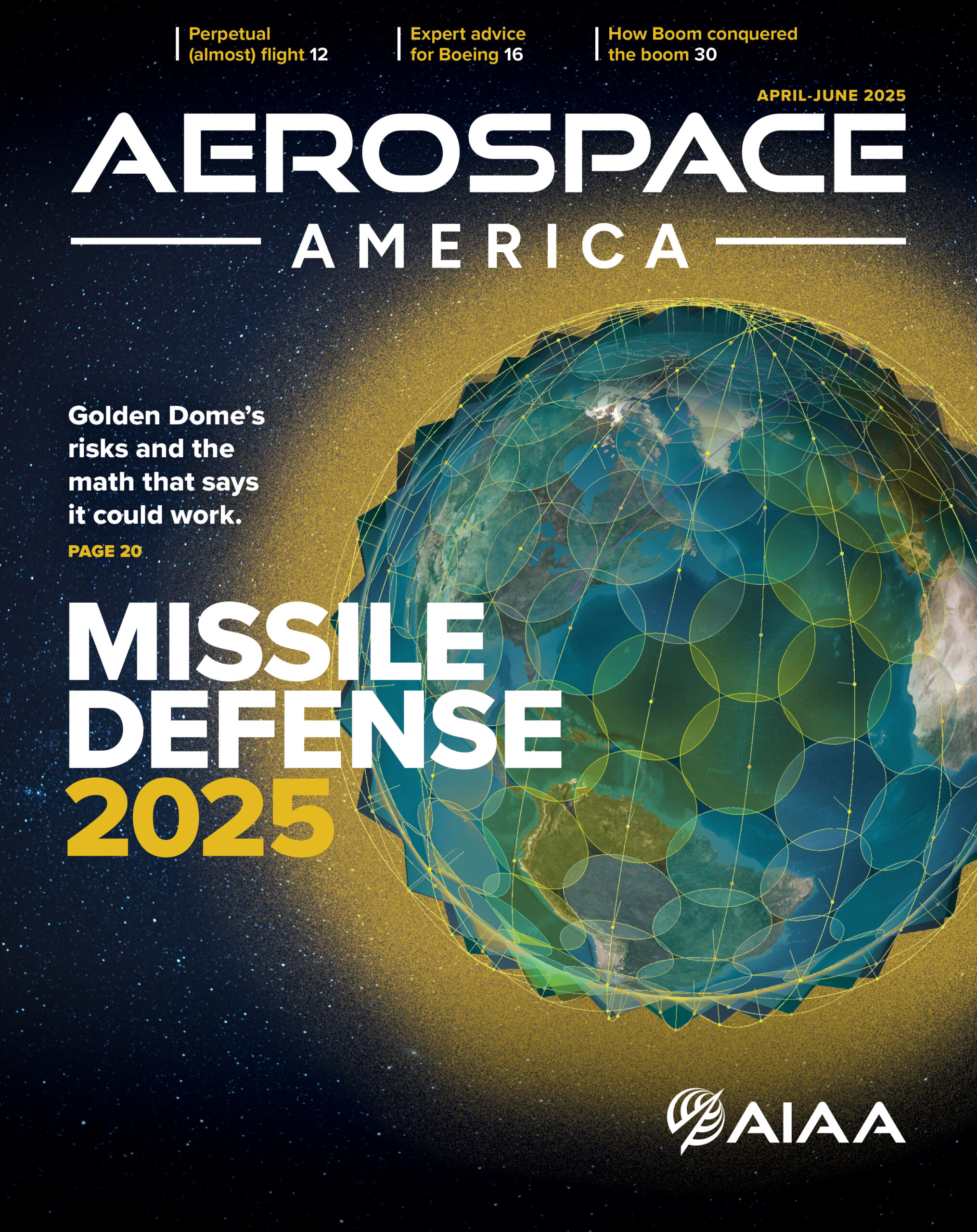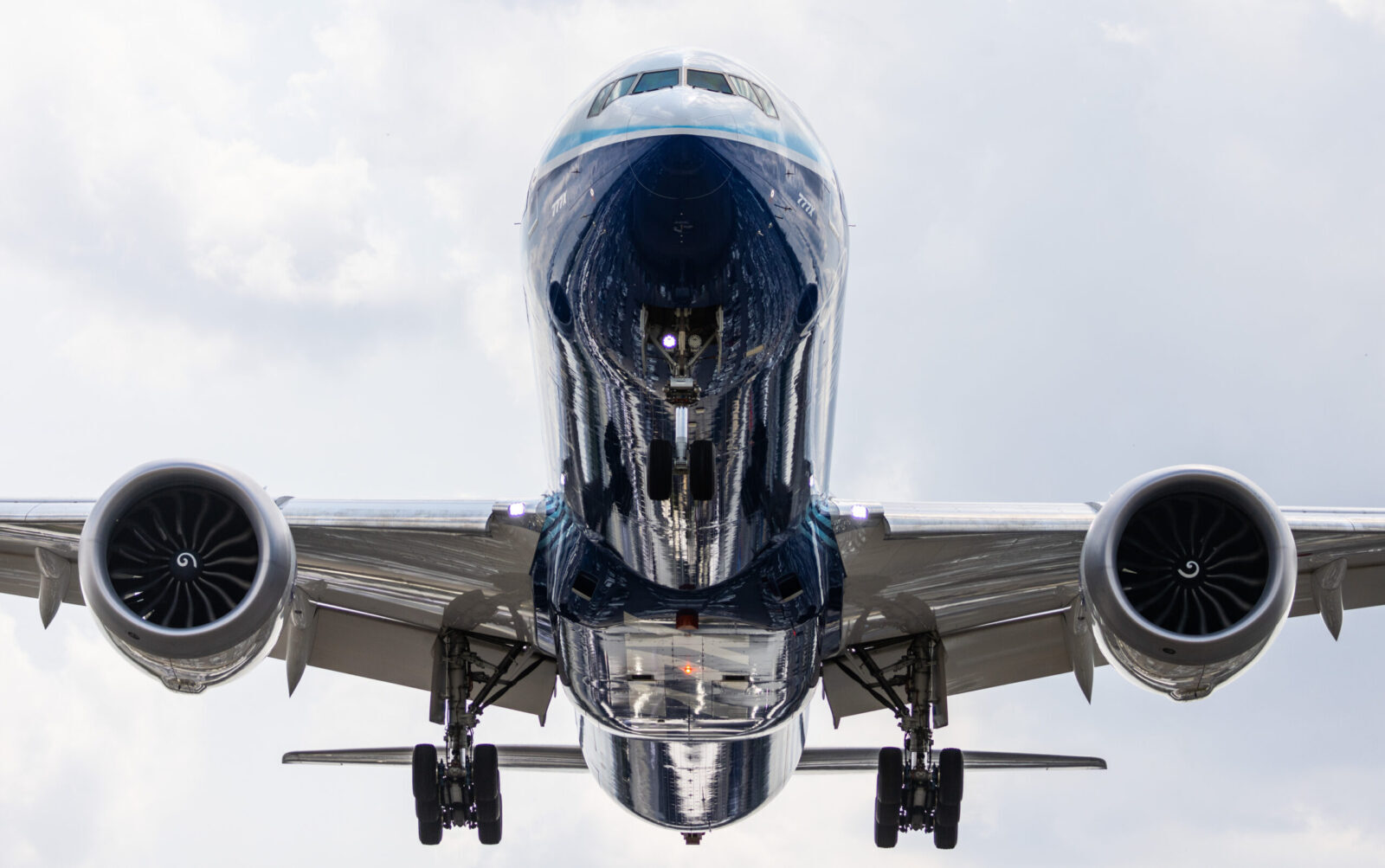Stay Up to Date
Submit your email address to receive the latest industry and Aerospace America news.
From tariffs to supply chain woes and air taxi demonstrations
With some 300,000 visitors from around the world expected to congregate at Le Bourget Airport next week, there’s sure to be no shortage of interesting discussions at the 55th Paris Air Show.
This biannual gathering is one of the main events of the aerospace calendar, and this year is no exception. Show organizers anticipate some 150 aircraft on display, seven exhibition halls and 2,400 exhibitors from 48 countries. However, some of that enthusiasm could be tempered by uncertainty from ongoing supply chain delays and the tariffs that the Trump administration has already implemented against goods from various countries and plans to impose on others.
Here’s what I learned from my discussions with show organizers, analysts and attendees:
Tariffs
The aerospace industry is already feeling the impact of the tariffs that U.S. President Donald Trump enacted earlier this year on various materials required for aircraft production. Steel and aluminum tariffs were hiked earlier this month for the second time since March and now stand at 50%. Expect this to be a prominent topic both for events on the official agenda and informal chats on the sidelines of the show, according to companies I checked in with.
For the U.K. specifically, lower tariffs were among the terms of the new trade deal with the U.S. announced last month, but these haven’t yet materialized. And elsewhere, the duties seem to keep changing, which introduces additional challenges for companies managing an already complex supply chain.
Supply chain
Speaking of supply struggles, the companies I spoke to also expect much of the week to be devoted to discussing this persistent issue. In recent months, executives from Airbus and Boeing have described difficulties in getting the parts they need, which limits how fast the companies can assemble planes and how many new orders they can take on.
The big “pinch points” at the moment are cabin interiors, landing gear and engines, according to Sash Tusa, a London-based analyst with the research firm Agency Partners. Some of this can be traced to Russia’s 2022 invasion of Ukraine and the resulting sanctions, which forced companies to identify alternative suppliers and sources for raw materials. A lack of specialized component suppliers is also contributing to the shortage.
On the engine side, suppliers face various challenges. CFM International, for instance, has reported components shortages and manufacturing and durability issues, while Pratt & Whitney is still working to catch up on deliveries that were delayed by the 2023 recall of 1,200 PW1100G geared turbofans. The company discovered that contaminated powder metal was used in production, which increased the likelihood of components cracking.
Taken together, all of these factors mean that Airbus and Boeing aren’t expecting to announce massive deal hauls, according to sources at the planemakers.
“I’m sure there will be some orders” announced throughout the week, Tusa said. The Paris Air Show and its U.K. counterpart, Farnborough, are popular venues for the companies to unveil large orders. “But is it going to be a 1,500-2,000 aircraft year? Almost certainly not, because there are no slots available.’’
Electric air taxis
The show comes at an inflection point for this nascent industry, with two European developers filing for insolvency in recent months and others in the U.S. appearing poised to receive type certification from the FAA as soon as later this year.
Volocopter of Germany, which in March was rescued by the Chinese-owned Diamond Aircraft, won’t be an official exhibitor but plans to send a small delegation, a spokesman told me. Likewise, U.K. developer Vertical Aerospace said it plans to send several top executives but not an aircraft. The company’s current focus is flight testing its second prototype, which began flying in July 2024.
The U.S. contenders are planning to make splashier appearances, befitting their healthier financial positions. While Joby Aviation of California only plans to send executives, Archer Aviation and Boeing subsidiary Wisk intend to also display some hardware. Archer said it will bring one of its four-seat Midnight air taxis, and Wisk told me that a prototype of its Gen 6 production aircraft will be on display in its chalet, located next to Boeing’s.
And there might be additional excitement in store for air taxi fans: BETA Technologies of Vermont plans to fly its ALIA CX300 during the show, as part of the aircraft’s ongoing European tour. A BETA spokeswoman said the company plans to fly several days during the show and that the CEO will be one of the pilots. The aircraft is to touch down in Le Bourget following stops in Ireland, throughout the U.K. and Pontoise, France.
While such demonstrations are exciting, analyst Sergio Cecutta of the Arizona firm SMG Consulting cautions against using them to draw any conclusions about the health of the various air taxi developers. As companies get closer to beginning passenger flights, they are thinking more carefully about what they spend money on, he said.
“This year, it’s no news is good news,” he said. “It just means you know that they’re doing their work.”
Opener image caption: A Boeing 777X makes a demonstration flight at the 2023 Paris Air Show. Credit: © Anthony Guerra
About Charlotte Ryan
A London-based freelance journalist, Charlotte previously covered the aerospace industry for Bloomberg News.
Related Posts
Stay Up to Date
Submit your email address to receive the latest industry and Aerospace America news.




